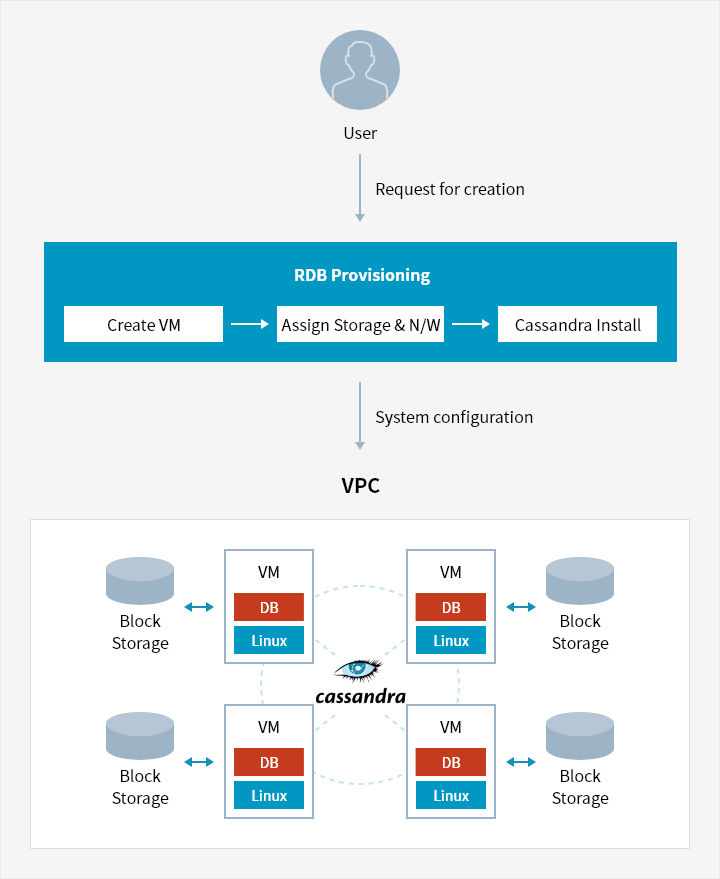
Cassandra
Open Source NoSQL Distributed Database
Overview


-
Distributed Database
With Cassandra, users can store clusters across multiple nodes. Cassandra nodes configured with a ring do not have a master node and each node handles incoming requests, parallel processing of large data sets is accelerated.
-
Elastic Scalability
Cassandra uses linear scaling where requests are distributed by adding more nodes to increase cluster processing power, rather than vertical scaling, which adds more hardware. Users can scale up or down nodes without cluster reconfiguration and transaction processing capability increases in proportion to the number of nodes added.
-
High Availability
With Cassandra, users can achieve high availability by referring to the user guide.
Each node of Cassandra uses the gossip protocol to send data randomly and when a node fails, users can replace the faulty node without system disruption. -
Easy DB Configuration
Based on Red Hat Enterprise Linux (RHEL) OS, users can immediately install DB on Samsung Cloud Platform and utilize the monitoring and billing features.
The installed DBMS will automatically make configurations and manage DB based on the user environment.
Service Architecture


- Block Storage ↔ VM(DB,Linux) - Cassandra
- Block Storage ↔ VM(DB,Linux) - Cassandra
- Block Storage ↔ VM(DB,Linux) - Cassandra
- Block Storage ↔ VM(DB,Linux) - Cassandra
Key Features
-
Distributed structure
- No master node
- Single node or multiple nodes can be configured -
Elastic scalability
- Nodes can be scaled in or out without stopping the cluster
-
High availability
- Support a distributed structure that replaces nodes without service interruption in the event of failure within the cluster
-
DB provisioning and management
Pricing
-
- Billing
- Open source DB is provided free of charge, VM usage is charged
-
- Default options and user-added options
- Default option : OS S/W, OS installation disk (100GB), 1 public IP
- Additional charges based on user-added product/option (e.g. Reserved IP)
Whether you’re looking for a specific business solution or just need some questions answered, we’re here to help